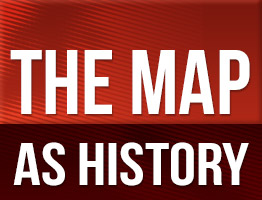This map is part of a series of 5 animated maps showing .
▶ View series: Independence for Spanish American colonies
SubscribeIndependence movements: context and influences
This map is part of a series of 5 animated maps showing the history of Independence for Spanish American colonies.
Following the conquest, Spanish America was organized into vice-royalties. The vice-royalty of New Spain, with its capital in Mexico City, stretched across Central and North America. The vice-royalty of Peru, with its capital in Lima, covered most of South America. As in other parts of the Spanish Empire, virtually autonomous territories also existed in the Americas, such as Cuba, Puerto Rico, Santo Domingo and Venezuela.
In the 18th century, the new Bourbon dynasty undertook a series of reforms to improve exploitation of these territories. The vice-royalty of New Granada was created in 1717, comprising what is now Panama, Colombia, Ecuador and Venezuela, with Santa Fe de Bogotá as its capital. The vice-royalty of the Río de la Plata was established in 1776, with Buenos Aires as its capital.
Charles III’s ‘enlightened despotism’ strengthened Spain’s trade monopoly, increased the tax burden and restricted access to administrative positions for the American-born population, sparking discontent among Creoles.
In 1767, the Jesuits were expelled from the Crown’s territories but in exile, they continued to oppose the absolutist regime.
In addition, the liberal ideas of the Enlightenment spread across America and heightened the desire for more democratic systems.
Amid these colonial tensions, rebellions broke out among the native Indians, slaves, and mestizo and mulatto peasants, who represented 85% of the population. In 1780, a vast indigenous uprising spread across parts of Peru, Bolivia and northern Argentina. José Gabriel Condorcanqui, the leader of this rebellion, gathered an army of 60,000 indigenous followers and proclaimed himself the new Inca monarch under the name Tupac Amaru II. The Spanish repression was relentless and cruel.
In 1791, in French Haiti, a slave rebellion led to independence for the island, including the Spanish side, after a violent struggle.
These mutinies and rebellions raised awareness within the Creole society of their role in history and of the need to ensure that their long-desired freedom did not bring an end to their privileges, as had happened in Haiti.
The independence of the United States and the French Revolution served as models for Latin America. The liberal and federalist values that guided the American people and the triumph of Enlightenment principles in France had a profound influence on the leaders of the independence movements. This was the case, for example, for Francisco de Miranda, a Venezuelan hero, who had previously participated in the American War of Independence and the French Revolution.
